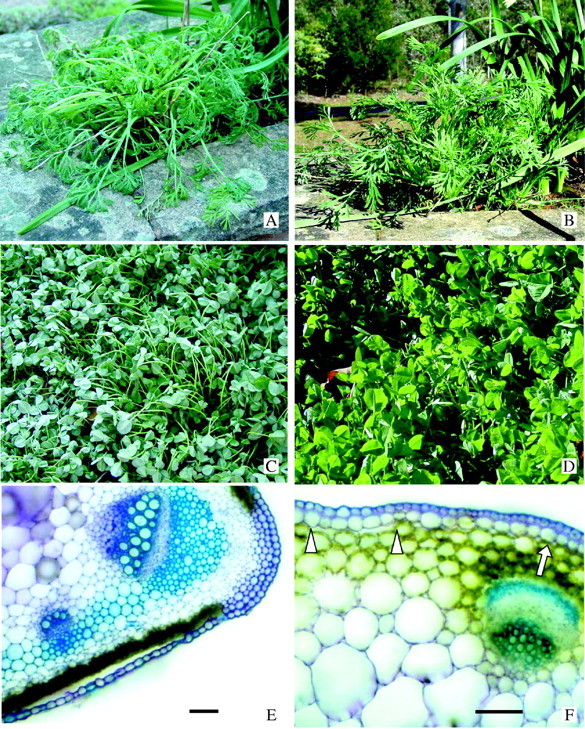Fig. 2.

(A–D) Plants growing in late winter in Canberra. These and similar plants were used in this study. (A) California poppy at 07·00 h, temperature −4 °C. (B) The same plant at 08·30 h the same day when warmed by the sun, ambient temperature +4 °C. (C) White clover at 07·00 h, temperature −4°C. (D) Same patch of clover on the same day at 08·00 h after brief warming by the sun, ambient temperature +3 °C. (E and F) Hand-cut transverse sections of petioles stained with toluidine blue showing the inherent regions of weakness (faults) between surface tissues and the underlying chlorenchyma at the petiole periphery, and anchorage regions where surface tissues do not detach during extracellular ice formation. (E) California poppy. This petiole was sectioned in early summer and was from a young leaf that had never been frozen. During sectioning the single-layered lower epidermis separated at the fault over the chlorenchyma but not at the anchorage over the vascular bundle at the wing of the petiole. Bar = 100 μm. (F) White clover. This petiole was sectioned in August and was from a leaf that had experienced at least six freezing/thawing events previously. Arrowheads indicate the fault separating the two surface layers from the underlying chlorenchyma. The arrow indicates the anchorage over the vascular bundle. Bar = 100 μm.
